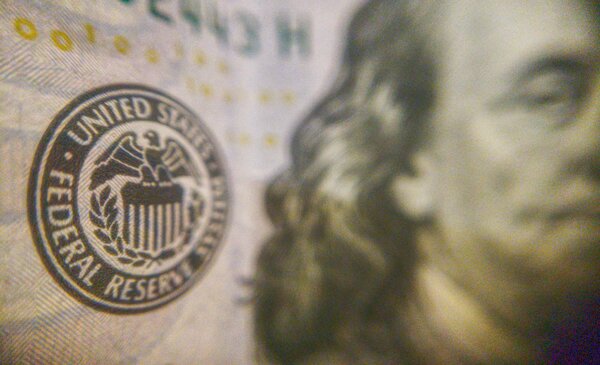Branding Strategy Insider helps marketing oriented leaders and professionals like you build strong brands. BSI readers know, we regularly answer questions from marketers everywhere. Today we hear from Ashish, a Marketer in Wurzburg, Germany who writes…
Hello,
Referring to this BSI post it’s indeed interesting to read how religion can be an inspiration for brands. Since this is the case, do you think components or teachings from religion can be incorporated into branding models of today for better clarity or resolving the grey areas of ethics?
Models being Erik Roscam(2009), Silvia Azmitia (2010), Aaker (1996), Keller (1998), Kapferer (1997), Double Vortex brand model -de Chernatony & Dall’Olmo Riley (1998)
Ashish, this is a very interesting question, indeed. I largely agree with Martin Lindstrom’s comparison of branding to religion. I think religion and branding have a lot in common if one thinks about only two things that people hope to get out of both: (1) reinforced shared values and (2) a sense of belonging. Once these are present, (3) self-expression (of the shared values) also becomes important. (4) Authenticity is also expected and appreciated in brands and religions and missed when not present. I have heard many people speak derisively about religious hypocrites and certainly the BP brand got into significant trouble for not living its promise. But, you are not asking about that. Rather, you are asking what branding can learn or borrow from religion.
Certainly, most religions have as a central tenant to love others. This is “The Golden Rule” and Christianity’s Great Commandment. But it is present in almost every other religion too. For instance, compassion is a central tenant of Buddhism and love of others is taught in Judaism, Islam, Hinduism and Confucianism among other religions. This emphasis on love has significant implications for customer service and designing the total brand experience. It also has implications for honesty in dealing with customers. “Trustworthy” is the brand personality attribute chosen most frequently by our 150+ clients when positioning their brands.
More intriguing to me though is the Buddhist concept of non-attachment (which was reinforced by Jesus Christ in several of his teachings). It states that one will only achieve lasting peace if one is not attached to a person, thing or outcome and if one is also not averted to a person, thing or outcome. That is, a person must not be driven by strong desires or strong fears. The strongest desires lead to compulsive or addictive behavior. While strong fears can be debilitating. This does not preclude enjoying something while you are present with it. Blake’s poem captures the concept perfectly, “He who bends to himself a joy / Does the winged life destroy; / But he who kisses the joy as it flies / Lives in eternity’s sunrise.” Seneca said, “The greatest wealth is a poverty of desires.” Interestingly, brands often play off of strong desires and fears. How many brands promise to give someone more status, make the person stand out as unique, make the person more attractive or reinforce that the person is smart? All of these desires (to have more status, to stand out as unique, etc.) are paths to higher self esteem. So, brands often prop up people’s self esteem. Why does this work so well? Because so many people have low self esteem. Now, what does this have to do with religion? A lot.
I remember as a child repeating these words over and over again every Sunday at church, “I am a poor miserable sinner.” Talk about affirmations. How healthy is that one? And yet many religions indicate that God is transcendent and immanent. In simple language, God is above and beyond and in and through all things. And if God is perfect and God is in me, how can I be that messed up? Of course, some religions indicate that the duality of good and evil, of “this” and “that” is an illusion. In fact, it is the illusion of separation/duality that we chose when we ate from the tree of the knowledge of good and evil in the Garden of Eden. That is why we need “atonement” (at one ment). If that is the illusion, what is the reality? The reality is that everything is interconnected as one and that there really only is the One. Hmmm.
What does this have to do with branding? Well, if we are one with God, we shouldn’t have many self-esteem problems. And if we don’t have many self-esteem problems, then “status brands” and other self-expressive brands wouldn’t have as strong an appeal as they do today.
Conversely, let’s consider fear. Have you ever been worried that you would be seen using the wrong brand? Or have you ever used a brand that claimed to lessen the likelihood of something fearful? In the Bible, it says, “For God hath not given us the spirit of fear.” It also says, “Are not two sparrows sold for a penny? Yet not one of them will fall to the ground apart from the will of your Father. And even the very hairs of your head are all numbered. So don’t be afraid; you are worth more than many sparrows.” The Urantia Book says that “Fear is man’s chief enslaver and pride his great weakness.” While Harry Palmer in his book Living Deliberately, writes “Fear is a BELIEF in our inadequacy to deal with something.” In his first inaugural address, US President Franklin D. Roosevelt said, “…the only thing we have to fear is fear itself —nameless, unreasoning, unjustified terror which paralyzes needed efforts to convert retreat into advance.” Interestingly, Nelson Mandela said, “Our worst fear is not that we are inadequate. Our deepest fear is that we are powerful beyond measure.” Could our greatest fear be that we are something far beyond our separate egos and sets of identities?
But, I am really going off on philosophical tangents here.
So what can brands learn from religion?
- To stand for something admirable
- To be authentic
- To treat their customers honestly and compassionately
- To focus on uplifting spiritual qualities rather than fear:
o Courage
o Grace
o Beauty
o Truth
o Radiance
o Peace
o Joy
o Love
o Wisdom
o Innocence
o Freedom
o Compassion
o Kindness
o Goodwill
o Forgiveness
o Gratitude
An advertisement that included one or more of the aforementioned qualities would likely be very well received. I invite your comments on this post.
Have a question related to branding? Just Ask The Blake Project
The Blake Project Can Help: The Brand Positioning Workshop
Branding Strategy Insider is a service of The Blake Project: A strategic brand consultancy specializing in Brand Research, Brand Strategy, Brand Licensing and Brand Education





2 comments
Sohan Shenoy
March 14, 2011 at 1:22 pm
Nice article Brad! Nice to experience your philosophical and spiritual side as well!
People also use religious practices with the desire to feel more ‘sinless’, ‘pure’ and less ‘guilty’. Brands which can bring the same feelings in consumers could do wonders, wouldn’t it? I remember a brand of Soap in India which was supposed to be made using the water from the holy river of Ganga. It had this implicit promise of purification. Not sure how much the USP worked for the long term but it was initially accepted pretty well.
Brad VanAuken
March 15, 2011 at 4:02 pm
Thanks for sharing that example, Sohan. I can see how a “purification” positioning could work for a soap brand. And the holy river Ganga certainly is a proof point for that (if one focuses on its spiritual aspect and not its physical one).
Comments are closed.